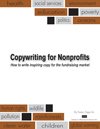Every communication, every page on your website, every phone call, email or letter is donor cultivation. This includes what you say and how you say it.
You’ve heard it at least a hundred times: “Friend-raising and not fundraising.” “Think of donors as individuals, as a friend, and not as a source of money.” And so forth. There are solid reasons why we tout these statements.
But that’s not all. All your fundraising and marketing messages must address your donors’ needs. Answer your donors’ questions. You tell donors what they want to know in a way that’s interesting and motivating to them. In other words, use powerful donor-centered copy.
Also, every message doesn’t have to include an “ask” for money. Think about this: How would you feel if every time you had a visit from a friend she hit you up for money?
Retain more donors by treating them right. How many of these donor cultivation tactics are part of your fundraising strategy?
- Involvement – Sign a petition; mail a protest card; contact a member of Congress by phone or email; invite donors to attend a special event; invite them to volunteer. Or have creative fun with a contest.
- Upgrade – Entice donors to give larger gifts or to join a regular giving program (sustainer). Your copy must reach the heart and soul of these donors. You must forge a stronger relationship on what matters most to them.
- Use surveys, questionnaires, and focus groups to discover donor interests and preferences.
- Invite them to visit
- Postcards – Share a short success story with key file segments and drive traffic to your website.
- Ask donors for their advice
- Recognize donors for their generosity of money and/or time. Use press releases; your newsletter or annual report; the local newspaper for local charities; or with certificates.
- Keep them informed of progress on how their money is helping. Send updates on any program donors are directly helping with – capital campaign, a new or expanded program, etc. Emails and your newsletter are particularly good for this. With regard to email, set a policy where a significant percentage of all emails sent do not have an “ask” of any kind. Just share success stories and link to your website. I think you’ll be pleasantly surprised at what happens.
- Tell donors how your cause is the best value for their money.
- Send video clips on work your organization is doing.
- Write them within a week (2 at most) of receiving a gift to thank them. Larger donations deserve a phone call. And if your beneficiaries create any art work or crafts, send these as a thank you gift.
- Study donor giving patterns. Segment your file and tailor your messages accordingly.

{ 3 trackbacks }
{ 0 comments… add one now }